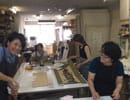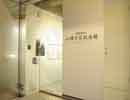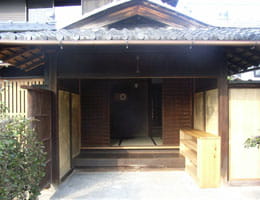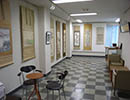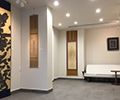Search
The art of kakejiku (hanging scrolls) epitomizes the Japanese aesthetic. When mounted on kakejiku, a unique form of expression, many excellent paintings and works of calligraphy created in Japan display an even greater brilliance. In that form, they continue to move and please contemporary audiences, thereby enabling them to learn new things by appreciating the past. Specializing in calligraphy and painting of the early modern and modern periods, Gallery Nagaragawa presents quality hanging scrolls and related works recognized as important cultural properties of Japan. We also buy such works and provide appraisal, evaluation, and other advisory services.
Vanishing Values
The Spirit of Learning Preserved in Japan
For many centuries after the Asuka-Nara era (around the 7th and 8th centuries), when Japan's first centralized government was established, Buddhism and Confucianism, both products of foreign cultures, formed the core of academic learning in Japan and permeated deeply into Japanese culture as key spiritual frames of reference. On the other hand, since the mythical age of the gods, the people of Japan have also held distinctive, indigenous views about nature, life, and death based on an ethos of living in tune with and as part of the natural world. This is the historical and spiritual soil from which Japan's rich and varied literary and artistic culture has sprung up, within which we can discern its people's long-standing traditions of respect for cultural attainments and keen spirit of learning.
Hanging Scrolls Reflecting the Spirit of Learning
HISAMATSU Shinichi (1889-1980) Philosopher and Zen scholar
Hisamatsu Shinichi was born in the Nagara Fukumitsu area of the city of Gifu, Gifu prefecture, in 1889.
In 1912 he entered the department of philosophy of Kyoto Imperial University (now Kyoto University), where he studied Buddhist philosophy under Nishida Kitaro. After his graduation, Hisamatsu questioned the value of narrowly intellectual, academic learning and struggled with problems concerning his whole personality, his fundamental existence. On Nishida's advice, in 1915 Hisamatsu began training under Zen master Ikegami Shosan at the Myoshinji temple complex in Kyoto. At that year's Rohachi-sesshin (a week-long fast and zazen meditation session held annually from 1 to 8 December to commemorate the Buddha's attainment of enlightenment), Hisamatsu underwent a Zen experience that crystallized his thinking and led him to an understanding of the “formless self.” He took up residence at Shunkoin Temple (part of the Myoshinji complex) in 1918, and thereafter spent the rest of his life in Zen ascetic training and philosophical contemplation. In 1941, while an associate professor at Kyoto Imperial University, Hisamatsu established the Kyoto Daigaku Shinchakai, a students' tea ceremony association promoting self-improvement and the study of tea ceremony culture.
In 1944 he established another group, the Kyoto Daigaku Gakudo Dojo, as a forum for students to pursue practical, independent studies through Zen training. (This group later changed its name to the FAS Society. An acronym derived from the phrases “formless self,” “all mankind,” and “superhistorical history,” the term “FAS” encapsulates the ideals of human existence that Hisamatsu advocated.) With support from the Rockefeller Foundation, in 1957 Hisamatsu went to the United States and taught a course on Zen and Zen culture as a visiting professor at Harvard Divinity School. The following year he moved on to Europe, where he met such leading thinkers as Gabriel Marcel, Martin Heidegger, and Carl Jung, held lecture meetings, and introduced Eastern philosophy and culture to Western audiences. Hisamatsu retired to his native suburb in Gifu in 1974 and spent the remainder of his life in quiet seclusion. He died there in 1980. His many writings include Zettai shutai do (The Way of the Absolute Subject), Toyo-teki mu (Oriental Nothingness), Zen to bijutsu (Zen and the Fine Arts), and other works collected in Hisamatsu Shinichi chosakushu (Collected Works of Hisamatsu Shinichi; 8 vols.), and his calligraphy has won high acclaim as Zen art.
we produce paintings mounts of hangingscrolls, panel screens.
The direct management studio by Gallery Nagaragawa
16 izumi cho
gifu city
gifu pref.
500-8073 Japan
16 izumi cho
gifu city
gifu pref.
500-8073 Japan
228-2
Nagarafukumitsu
Gif city
Gifu pref.
502-0817 Japan

